-
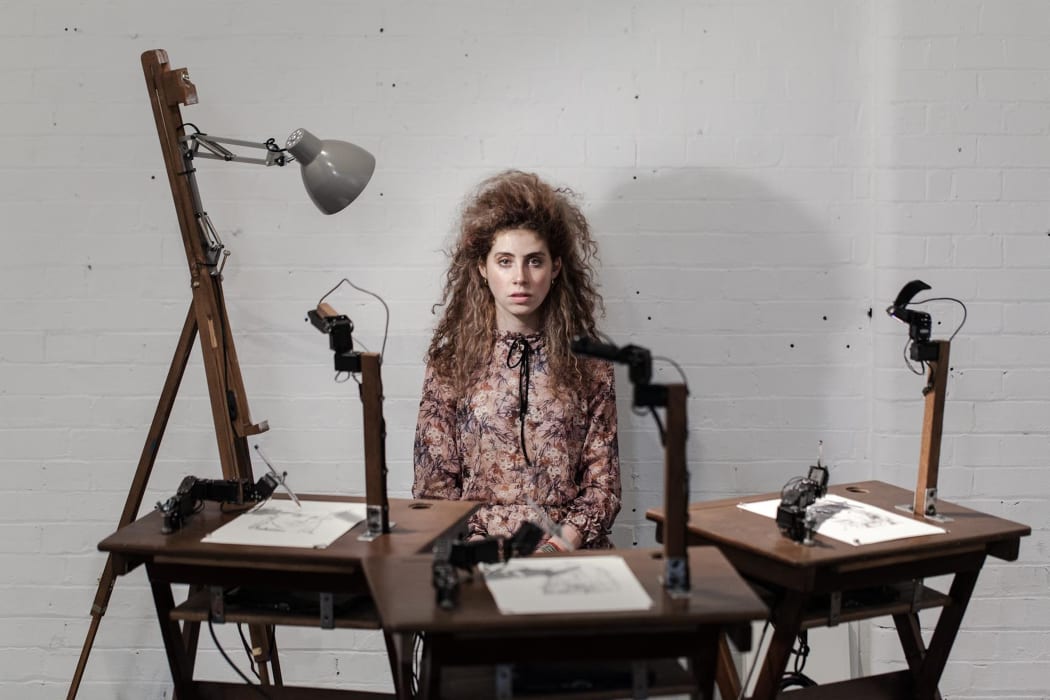 Patrick Tresset, Human Study #1 3RNP, Merge Festival 2018. Photo by tommo.
Patrick Tresset, Human Study #1 3RNP, Merge Festival 2018. Photo by tommo. -
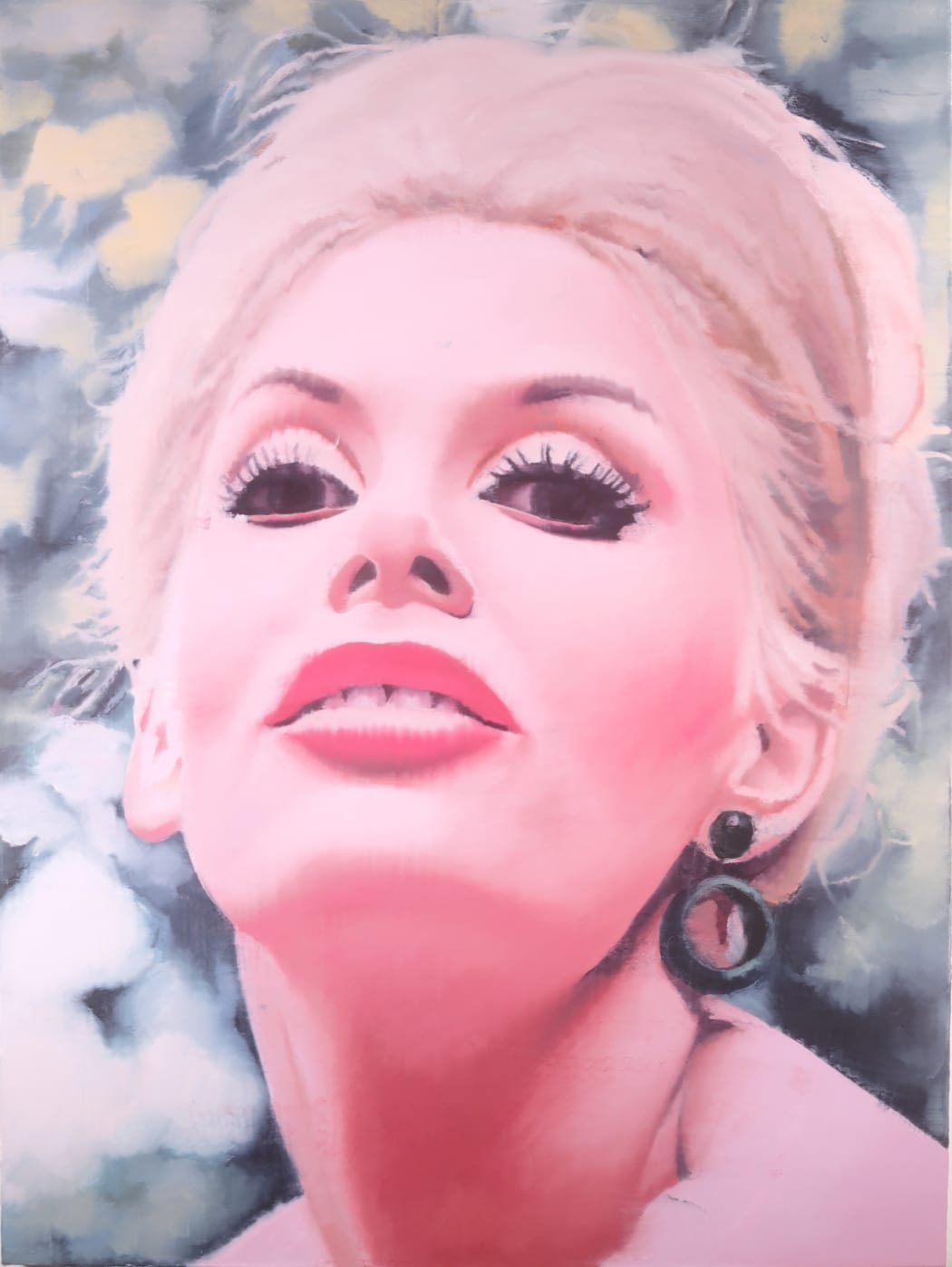 Nathan Ritterpusch, Try Asking Someone Who Cares #4, 2022The paintings let us develop a personal, intimate connection with the depicted figure, allowing us to reflect on our own feelings. It is about a game of offensiveness and attraction, about individual repression, and borderless desire. Not the feelings that are carved into the faces of the depicted are important, but the game of feelings which the viewers experiment as they explore the works. Thus arises a duality between fleshiness and spirit, self-reflection, and objectiveness.
Nathan Ritterpusch, Try Asking Someone Who Cares #4, 2022The paintings let us develop a personal, intimate connection with the depicted figure, allowing us to reflect on our own feelings. It is about a game of offensiveness and attraction, about individual repression, and borderless desire. Not the feelings that are carved into the faces of the depicted are important, but the game of feelings which the viewers experiment as they explore the works. Thus arises a duality between fleshiness and spirit, self-reflection, and objectiveness. -
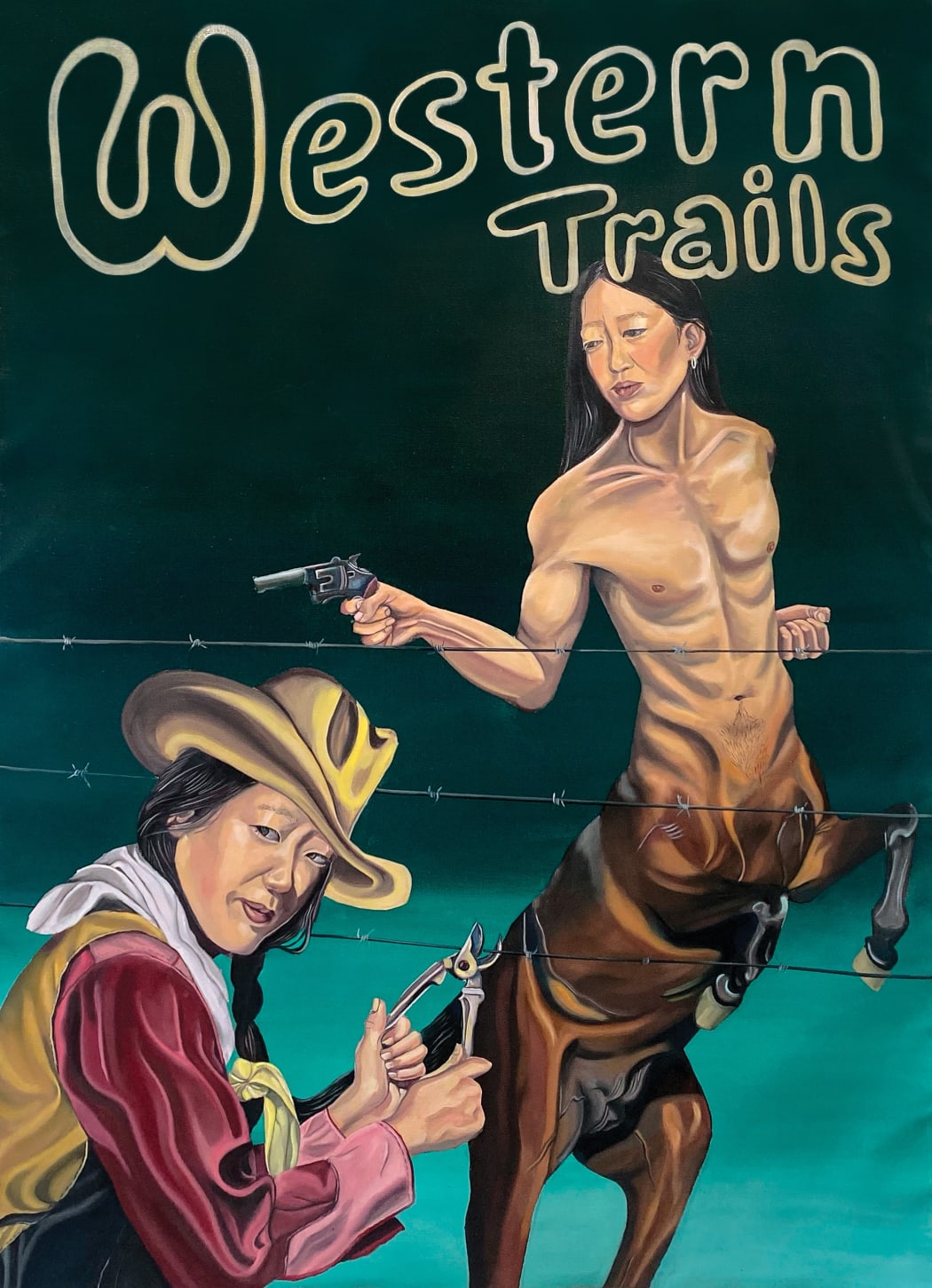 stephanie mei huang, green requiem for my self iii, 2022
stephanie mei huang, green requiem for my self iii, 2022 -
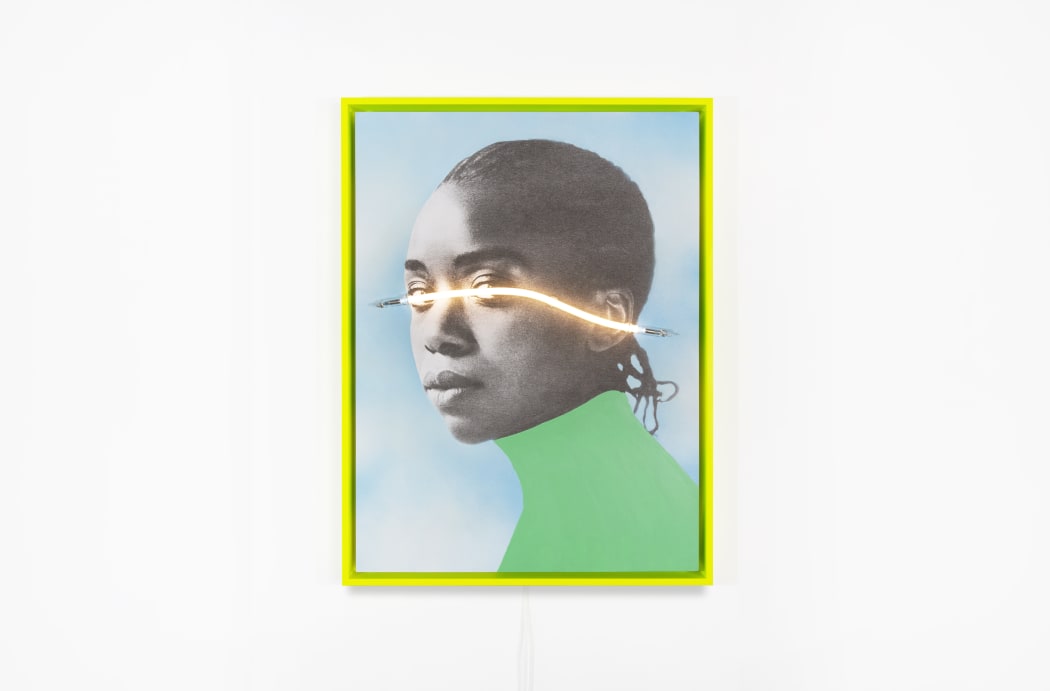 Javier Martin, Blindness Entre el cielo y lo fluorescente, 2021.
Javier Martin, Blindness Entre el cielo y lo fluorescente, 2021.At this stage of his 15-year process of creating the iconic Blindness collection, Javier Martin presents a continuation of this series: it concerns the appropriation of light, the struggle and contraposition of natural, artificial, and reflected light, and the visual definition of the complex characteristics of light.
Within the beauty of the seductive models lies the falseness per se: these women have been taken out of their world context of spotlights and placed as illusions for the viewer between idyllic landscapes and cold neon lights. They are portrayed as serene, often exotic and belonging to almost all beauty ideals. With the help of their beauty and self-confidence, they seduce and, at the same time, force the viewers to take place in their world: behind the light, in total blindness and delusion.
-
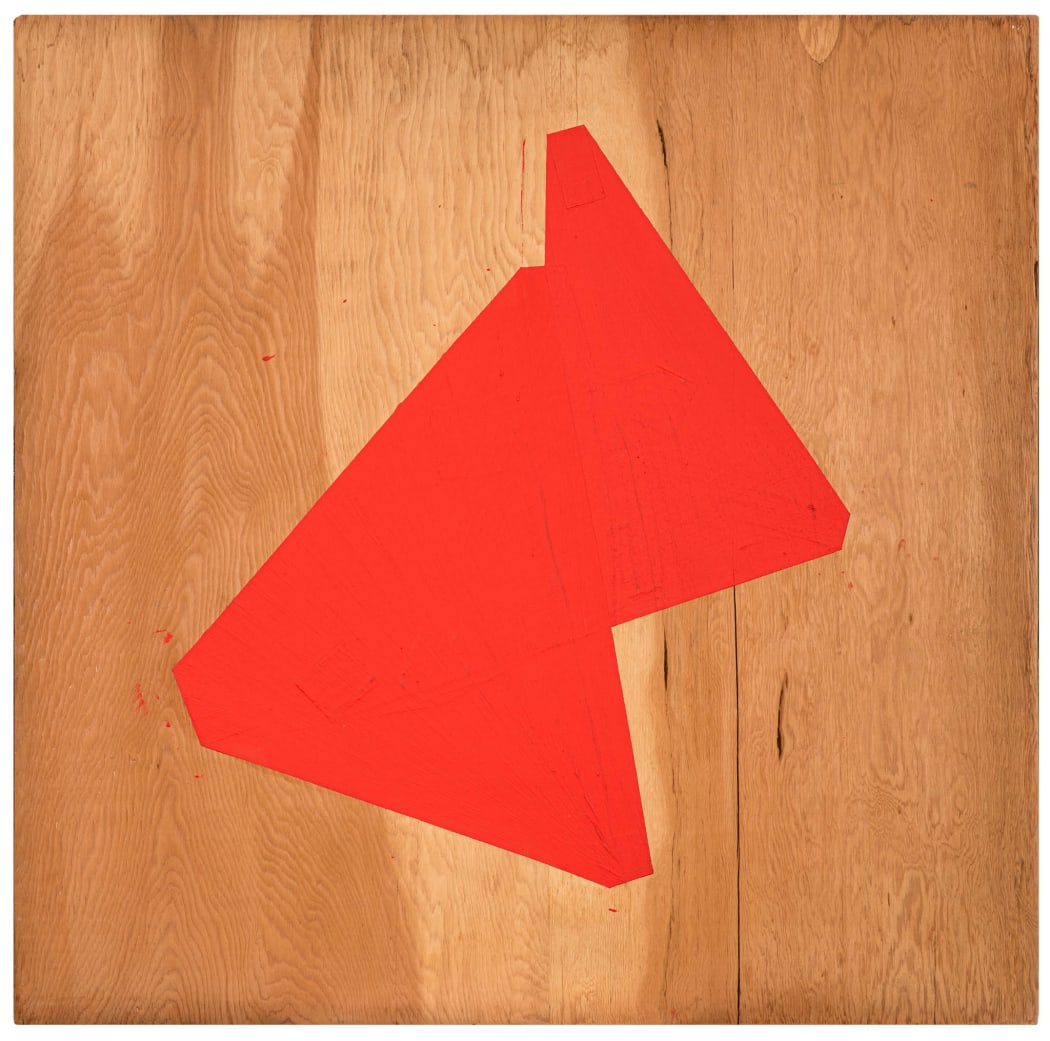 Judy Rifka - Single Shape - 3, 1974. Photo by Thomas Dashuber.
Judy Rifka - Single Shape - 3, 1974. Photo by Thomas Dashuber.Created in 1974, these two works illustrate the complexity of unconventional, strongly geometric forms and the choice of an unorthodox medium: a symbiosis between large-scale, monochrome figures and solid wooden panels. The results obtained may be a testament to Judy Rifka's years of studies in the field of space and form principles and the complex dialogue between the two-dimensionality of the surface and the three-dimensional form.
-
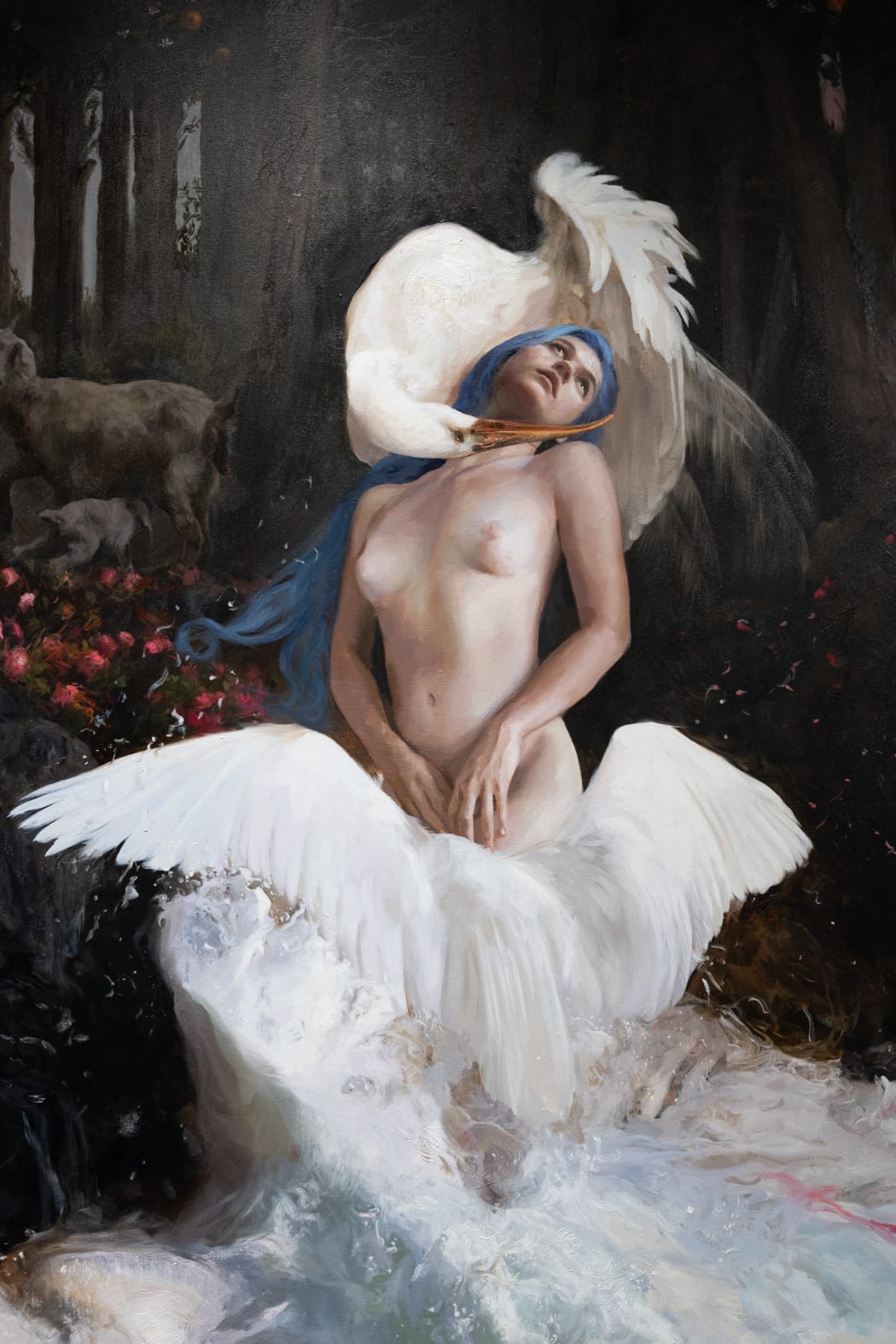 Guillermo Lorca - El Nacimiento De Venus, 2020 (Detail)
Guillermo Lorca - El Nacimiento De Venus, 2020 (Detail)This exhibition seeks to rediscover Venus: ideological and contemporary. As the title suggests, this show aims to encourage a philosophical discussion: is it possible to talk of a rebirth of Venus?
-
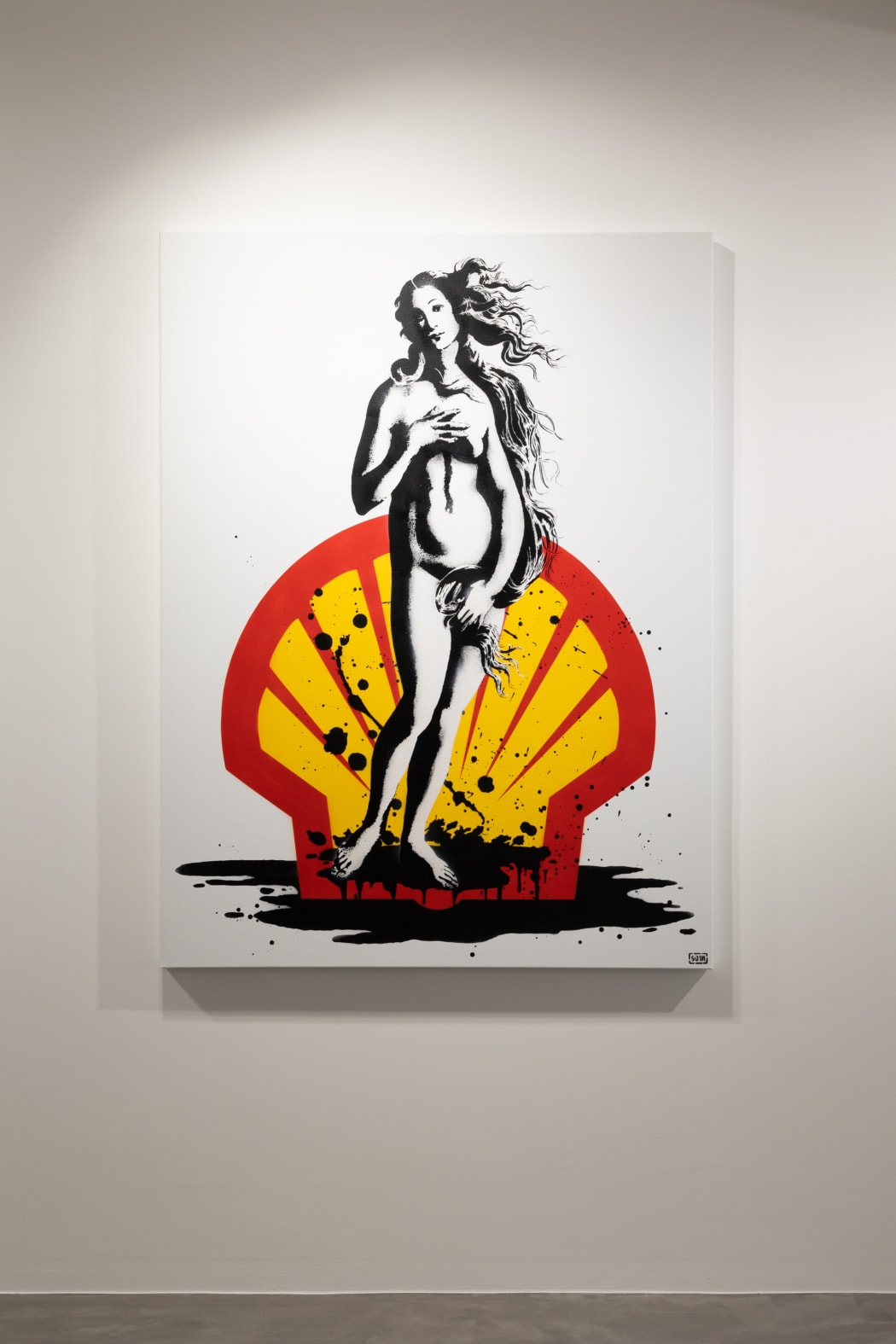 Goin - Hell from the shell. Photo by Thomas Dashuber
Goin - Hell from the shell. Photo by Thomas DashuberTwo elements of this work are clearly recognizable: the Shell-logo and a detailed Botticelli Venus. We may be dealing with a subtle irony and probably with a political-critical confrontation.
-
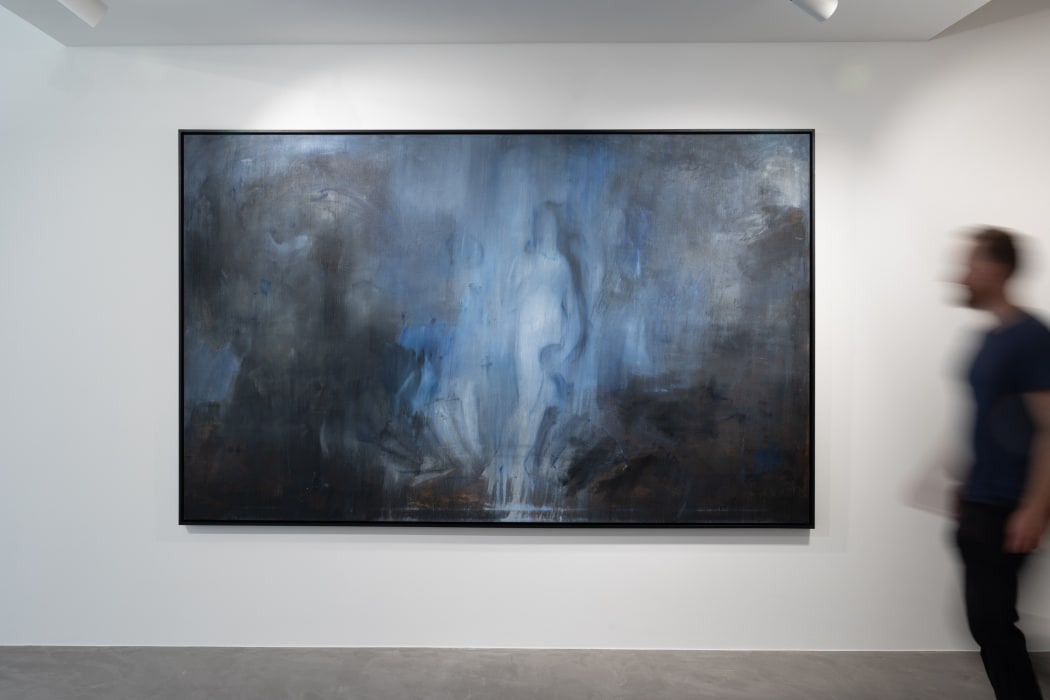 Jake Wood-Evans - Long after the Birth of Venus (2020). Photo by Thomas Dashuber
Jake Wood-Evans - Long after the Birth of Venus (2020). Photo by Thomas DashuberIn this 172cm x 278cm long oil painting the British artist Jake Wood-Evans gives us a glimpse of a long-forgotten Venus. As if illuminated by a reflector, a Botticelli-Venus silhouette reveals itself, which is encased in soft, cold shades of blue.
-
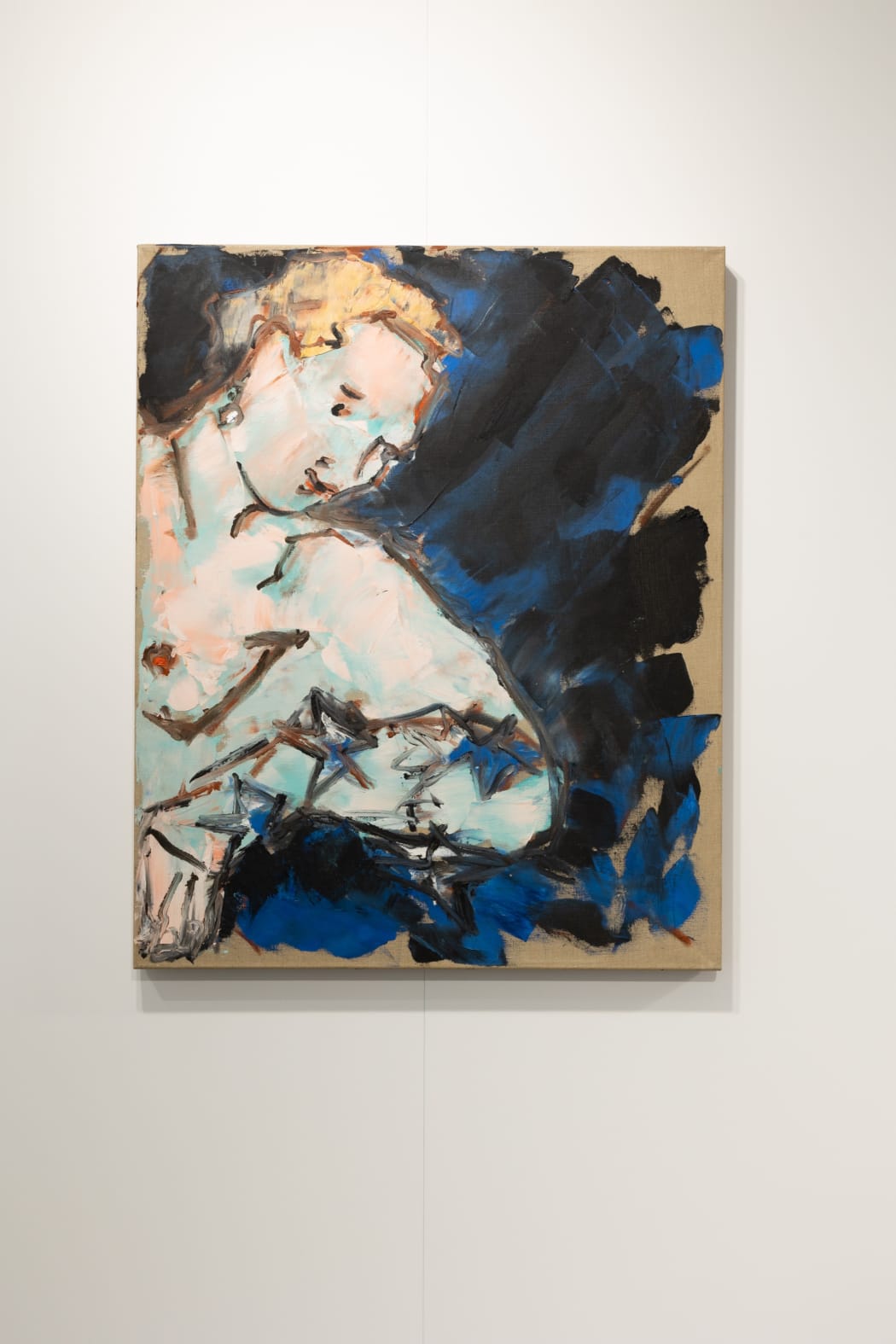 Judy Rifka - Venus with stars, 1984. Photo by Thomas Dashuber.
Judy Rifka - Venus with stars, 1984. Photo by Thomas Dashuber.In this oil painting from 1984, the American artist Judy Rifka presents us with a fairly human Venus - it is a strongly diagonal close-up of her. In a gingerly movement, Venus shows us the intense contoured blue-white stars that rest on her left forearm - analogous to a mother with a child in her arm that has just been breastfed, she holds the stars and looks upon them lovingly.
-
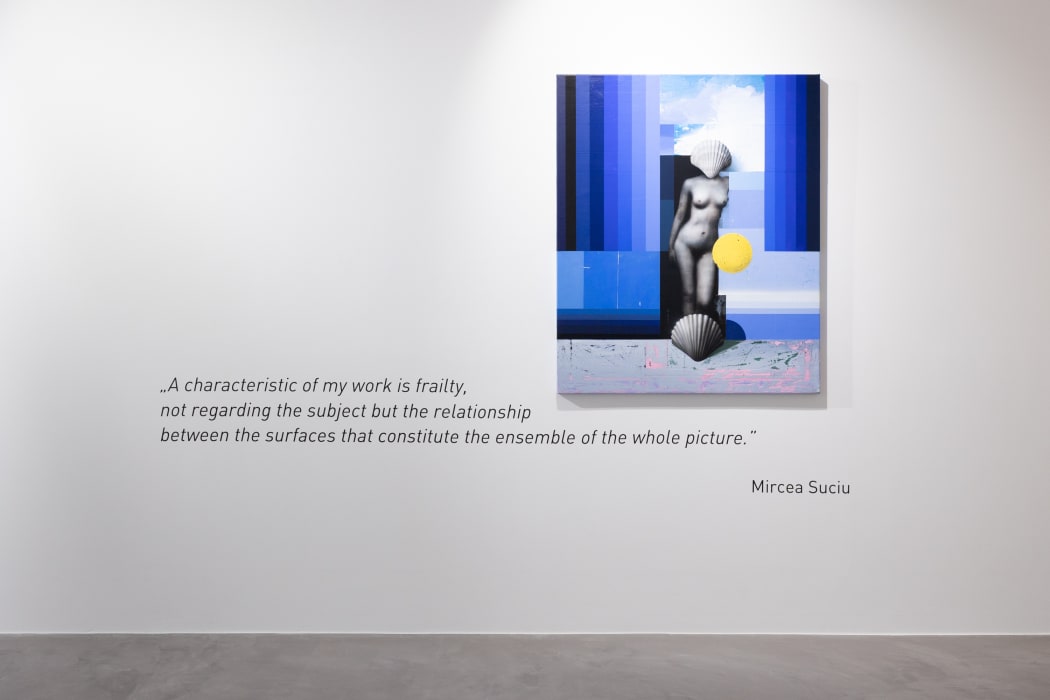 Mircea Suciu - Venus. Photo by Thomas Dashuber.
Mircea Suciu - Venus. Photo by Thomas Dashuber.The ability to integrate photography and painting in an outstanding symbiosis can be considered Suciu’s signature. In this tableau, the discrepancy between hues, gray tones and abrupt contrastive changes is presented us as a highly pleasant visual harmony.
